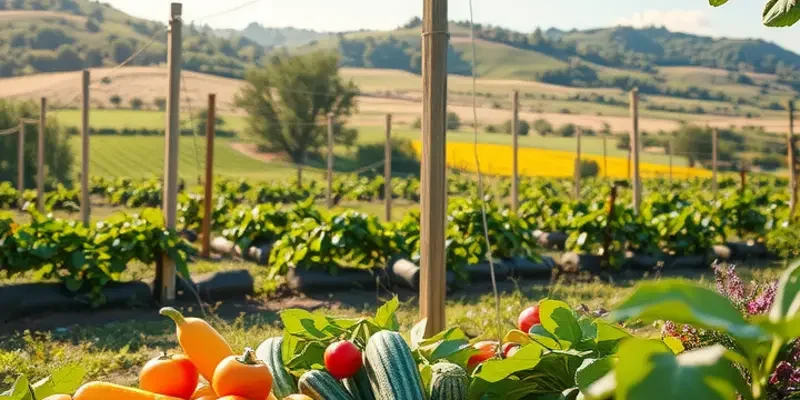Bread is more than just a staple; it represents cultures, traditions, and innovations around the globe. This article journeys through unique fermentation methods used worldwide, demonstrating how diverse ingredients and techniques can create a variety of flavors and textures. From the airy baguettes of France to the dense sourdough of San Francisco, let’s embrace the cultural significance and culinary artistry involved in bread fermentation.
The Ancient Craft: Leavening Through Time

Bread fermentation is a timeless art, deeply embedded in human history. It is a culinary tradition that transcends cultural boundaries, showcasing how communities utilized natural resources to create staple foods. One of the earliest examples of bread leavening is the sourdough from ancient Egypt. Egyptians mastered the craft over 5,000 years ago, utilizing naturally occurring yeasts in their environment. This method involves a simple mixture of flour and water, left to capture wild yeasts and bacteria. The process creates a leavening agent that imparts a distinctive tangy flavor and chewy texture, profound characteristics that define sourdough.
Across the continent from Egypt, Ethiopian injera offers another fascinating example. Injera is a spongy flatbread made from teff, an ancient grain native to Ethiopia. The fermentation process for injera is unique, lasting over several days. Water is mixed with teff flour, and left to ferment, developing a complex sour flavor. Injera is more than a bread; it doubles as a utensil, emphasizing its cultural significance in Ethiopian communal dining practices.
In India, the leavening art manifests as dosa and idli. These delicacies originate from South India, showcasing the region’s adeptness in fermentation. Both begin with a batter of rice and black gram (urad dal), but the fermentation duration distinguishes them. Idli batter ferments longer, resulting in soft, spongy cakes. Dosa batter ferments faster, lending a thin, crispy texture ideal for frying. These fermented foods not only serve as breakfast staples, but also reflect Indian food culture’s emphasis on variety and sensory experiences.
The art of bread fermentation significantly influenced European cuisine as well. In Italy, the leavened ciabatta bread exemplifies the Italian approach to bread making. It uses a biga, or starter, that ferments briefly before incorporation into the dough. The technique results in the airiness loved in traditional ciabatta, with airy holes dotting the crumb.
In the Americas, corn-based sourdough by Native Americans utilized different fermentation. Corn flour combined with water fermented naturally, developing a tangy flavor unique to the region. This method was efficient for using available resources, showcasing the adaptability of fermentation practices.
These diverse fermentation practices underscore both the ingenuity and adaptability of cultures utilizing available resources to sustain themselves. By examining these methods, one can appreciate the intricate relationship between food, environment, and tradition. Through fermentation, communities crafted breads that not only nourished but also connected people. Today, the art of fermentation continues to inspire global culinary practices, echoing ancient techniques in modern kitchens.
For those interested in exploring more about cultural influences on common practices, the article on culinary influences through trade provides additional insights.
Cultural Variations: Exploring Unique Techniques

Bread, a daily staple worldwide, serves as a canvas for cultural expressions through varied fermentation techniques. Each region’s climate, local ingredients, and traditions play a crucial role in defining unique bread characteristics.
In France, the baguette represents more than just a culinary icon. Its creation relies on ‘levain’—a natural leavening method using wild yeast. This technique, rooted in a climate conducive to nurturing wild yeast, results in a distinct crumb and crust. The French have elevated bread-making to a cultural ritual, weaving it into their daily routine with precision and pride.
Journeying to the Middle East, we find pita bread, celebrated for its simplicity and history. The fermentation process here uses commercial yeast, adapted over time to mesh with the warm, dry climate. This environment encourages a quick rise, yielding a soft, pocketed bread perfect for wraps. The communal aspect of making pita is significant; families gather to bake in shared ovens, reinforcing community bonds.
Neighboring cultures offer variations of flatbreads, like the Indian naan. Traditionally baked in clay ovens, naan uses yeast or a yogurt-based fermentation. The latter reflects a deep-seated tradition, emphasizing the accessibility of dairy due to widespread livestock farming. The dough’s fermentation creates a soft, chewy texture, well-suited for absorbing rich curries.
In Ethiopia, injera stands out with its unique fermentation process involving teff flour. This gluten-free grain, endemic to the Ethiopian highlands, ferments naturally over several days. This slow fermentation results in a sour taste and spongy texture, ideal for scooping stews. The communal sharing of meals on a large injera reflects the Ethiopian philosophy of togetherness.
Adapting techniques to local resources is evident in Eastern European countries, where rye bread prevails. In regions with less wheat availability, rye thrives. Sourdough-based fermentation, integral to making rye bread, produces a denser loaf. This method suits the cold climate, allowing for extended storage periods, a practical necessity for harsher conditions.
Investigating the communal and ceremonial aspects, the Russian ‘karavai’ is an emblem of hospitality and celebration, often featuring ornate patterns and symbolic shapes. The lengthy fermentation process, akin to sourdough, results in a rich flavor, befitting its role during weddings and festive gatherings.
Understanding these diverse techniques underscores the profound relationship between bread and culture. Each method arises from the interplay of geography and societal needs, reinforcing bread’s role as a global staple. For those seeking inspiration to incorporate global flavors into their baking, the world of bread offers an endless source of ideas.
Final words
The art of bread fermentation is a fascinating tapestry woven from diverse cultures, traditions, and innovations. Each loaf tells a story—one that connects us to our past and to each other. As we explore these diverse methods, it becomes clear that fermentation encompasses more than just a culinary process; it embodies a rich history and cultural significance. Whether you’re kneading dough at home or enjoying a freshly baked loaf from a local bakery, there’s an invitation to celebrate the global flavors and profiles that fermentation brings to our bread. So grab your favorite grains, embrace your local traditions, and join the timeless journey of bread-making.








